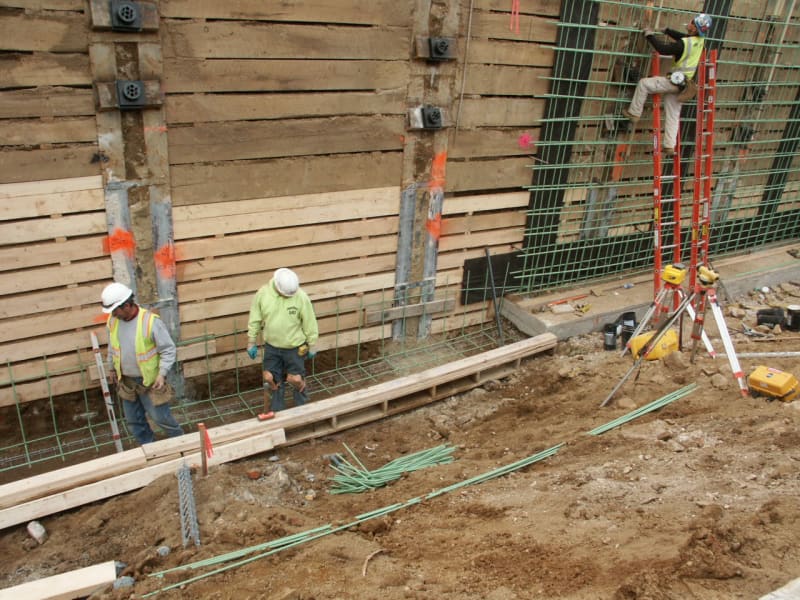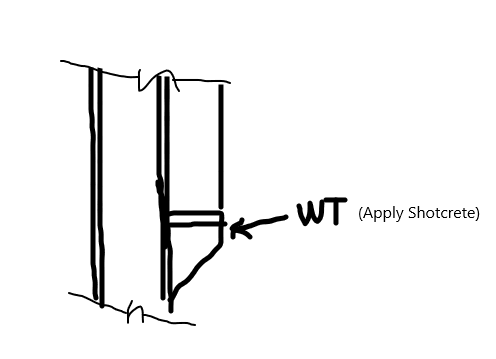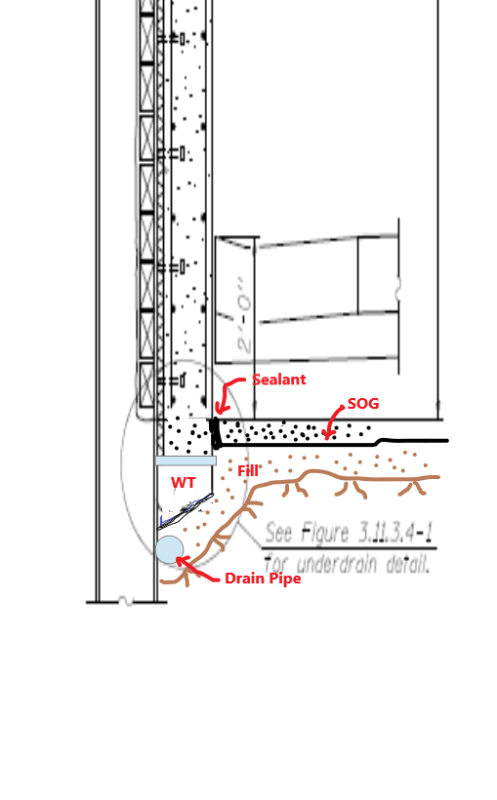Navigation
Install the app
How to install the app on iOS
Follow along with the video below to see how to install our site as a web app on your home screen.
Note: This feature may not be available in some browsers.
More options
Style variation
-
Congratulations cowski on being selected by the Eng-Tips community for having the most helpful posts in the forums last week. Way to Go!
You are using an out of date browser. It may not display this or other websites correctly.
You should upgrade or use an alternative browser.
You should upgrade or use an alternative browser.
Design of shear studs connected to soldier pile walls/concrete facing 1
- Thread starter t230917
- Start date
- Status
- Not open for further replies.
I design the studs for tension only. I place a work pad beneath the concrete facing to support the facing weight.
- Thread starter
- #4
This is a permanent retaining wall. I understand the procedure for concrete deck on steel beams, but unable to make the corresponding calculations for the soldier pile wall. Is there a guide that I can follow? AASHTO does not have anything for this, nor does the California Shoring Manual or any other state DOT manuals.
You need to decide if these headed studs are to perform as tension studs, shear studs, or a combination of both.
- Thread starter
- #8
Yes, the concrete panel is on the front face. Yes, I am adding 3 in . thick timber lagging between the soldier piles. I have attached a section view of the soldier pile with lagging, concrete facing and shear studs.
I would place a work pad under the concrete facing and connect your wall drainage board through weep holes below finished grade to a drain pipe in front of the work pad.
I do hope there is better detail for the drain pipe.
I was thinking adding structural shapes, which will be more reliable than wood lagging. Note if the concrete panel does not bear on footing, then you need to distribute its weight to the studs. Through this arrangement, the stud will subject to combined shear (due tp shear flow and panel weight) and tension (end reaction due to soil pressure), the allowable stress of stud will be reduced.
I was thinking adding structural shapes, which will be more reliable than wood lagging. Note if the concrete panel does not bear on footing, then you need to distribute its weight to the studs. Through this arrangement, the stud will subject to combined shear (due tp shear flow and panel weight) and tension (end reaction due to soil pressure), the allowable stress of stud will be reduced.
retired13, why would you ever want to use "structural shapes" instead of wood lagging? These types of permanent, anchored and cantilevered, non-gravity, soldier beam retaining walls use temporary (but left-in-place) wood lagging boards which laterally support the soil prior to installation of the permanent facing which is usually cast-in-place or shotcreted, reinforced concrete, precast concrete panels, or CMU's which can be attached to the soldier beams by various methods.


I don't know how long the wood will remain in good shape, but I know structural shape can stay a long time. From structural point of view, structural beams enable the concrete to be designed as two way plate, rather than one way beam element. Some saving can be achieved.
The wood lagging, treated or not, will lose its strength over time but it will not deteriorate enough to create any voids or problems behind the wall. The wood lagging, or your "structural shape" lagging, does not need to last any longer than the time it takes to install the final permanent facing.
Actually I don't know why we are even worried about the lagging, it will be there for excavation support, but it shall not be considered in the design of the concrete wall. Without horizontal waler beam, the panel has to be designed as one way slab, otherwise, it can be designed as two way slab. But after all, one way design maybe having less headaches construction-wise.
retired13 said:I was thinking adding structural shapes, which will be more reliable than wood lagging.
retired13 said:Actually I don't know why we are even worried about the lagging,
retired13, "we" aren't worried about the lagging. You brought up the lagging when you mentioned that "I was thinking adding structural shapes, which will be more reliable than wood lagging."
- Thread starter
- #16
Try to keep the concrete drilled shaft to a minimum diameter. You may still need a simple work pad under the facing, between soldier beams, in order to set your wall forms and account for any sloped grade along the wall. I would try to keep the weight of the facing off the concreted soldier beam embeddment length. A big cost is drilling the holes for the soldier beams, especially if there is rock to be drilled. The smaller the hole, the cheaper the wall.
retired13, I may be wrong but I assume that the concrete encased, embedded portion of the soldier beam below the bottom of the facing is what is being referred to as the drilled shaft. PennDOT refers to this as a drilled shaft or caisson. I do not think (but may be wrong) that there are additional drilled shafts, other than the soldier beams, that will support the facing. If there were more drilled shafts, they would interfere with the drain pipe shown in the sketch provided by t230917.
- Status
- Not open for further replies.
Similar threads
- Question
- Replies
- 4
- Views
- 3K
- Replies
- 5
- Views
- 6K
- Replies
- 9
- Views
- 8K
- Replies
- 3
- Views
- 1K


